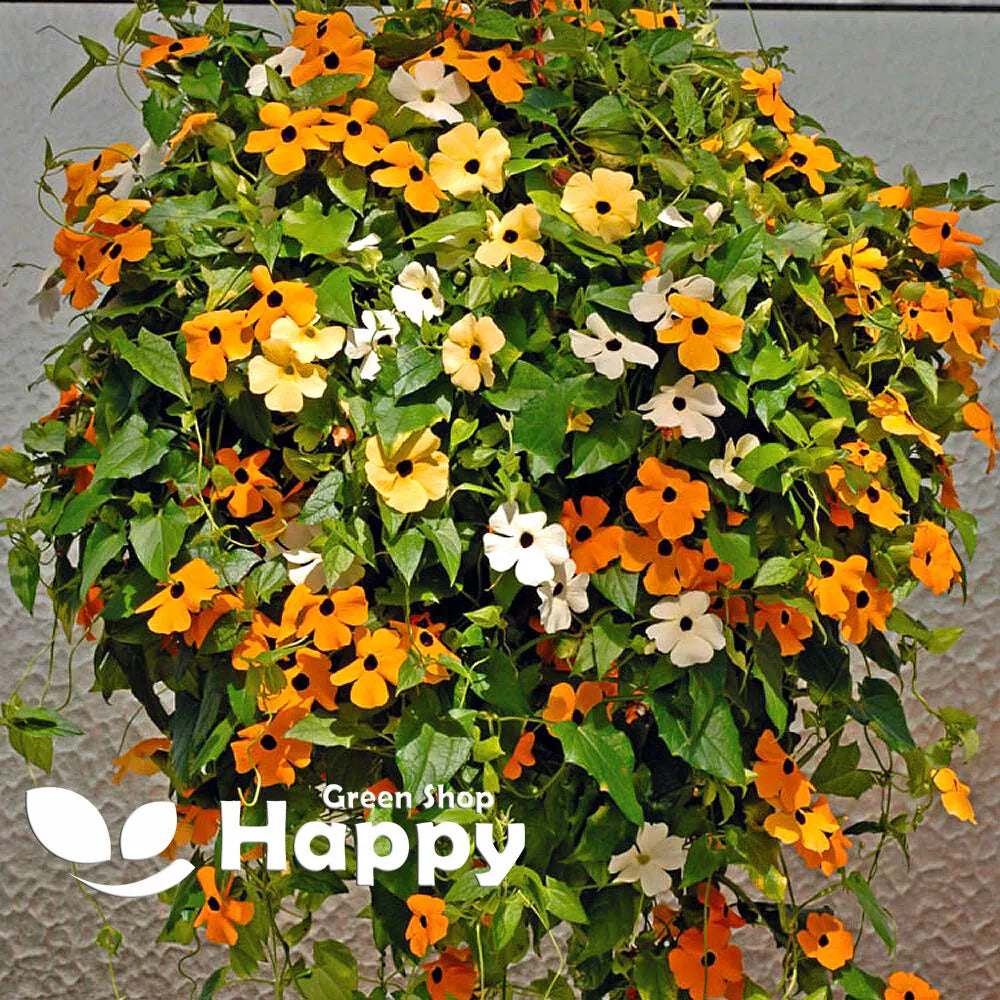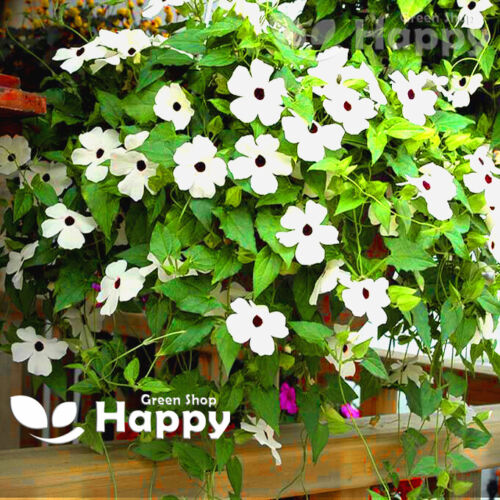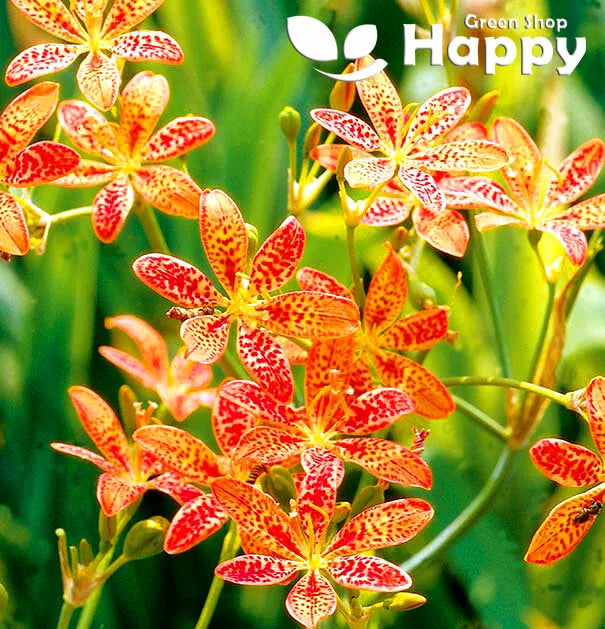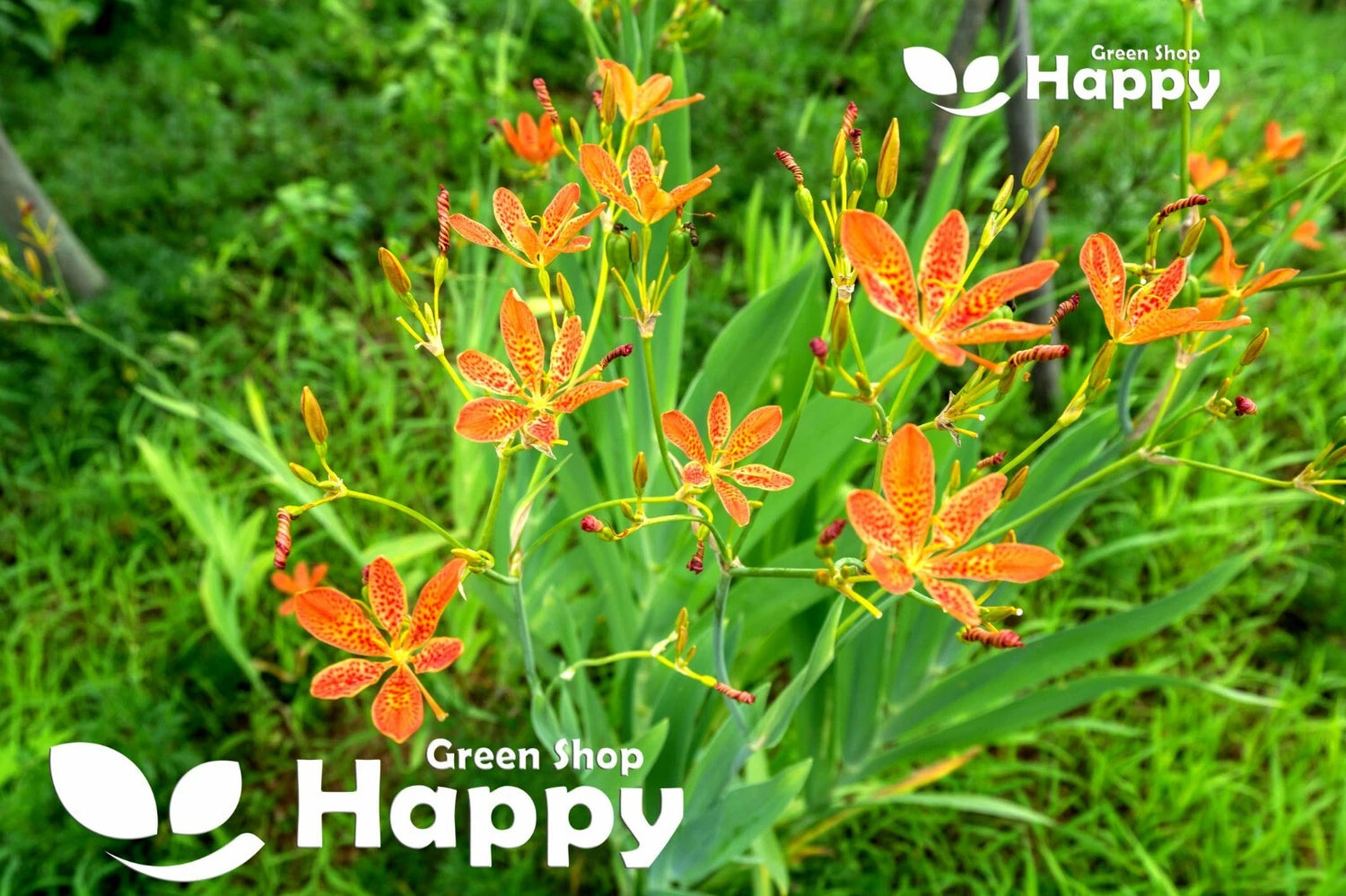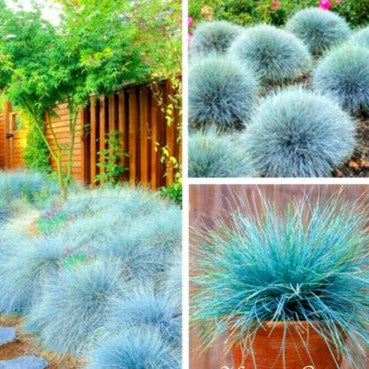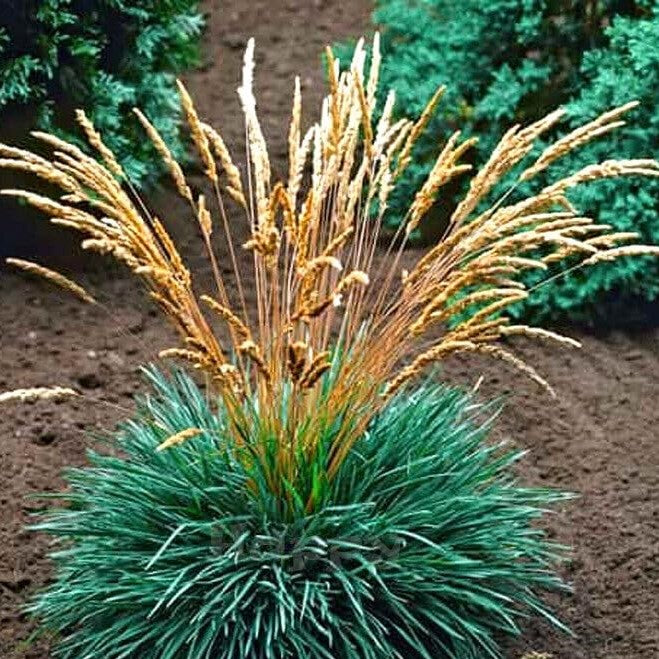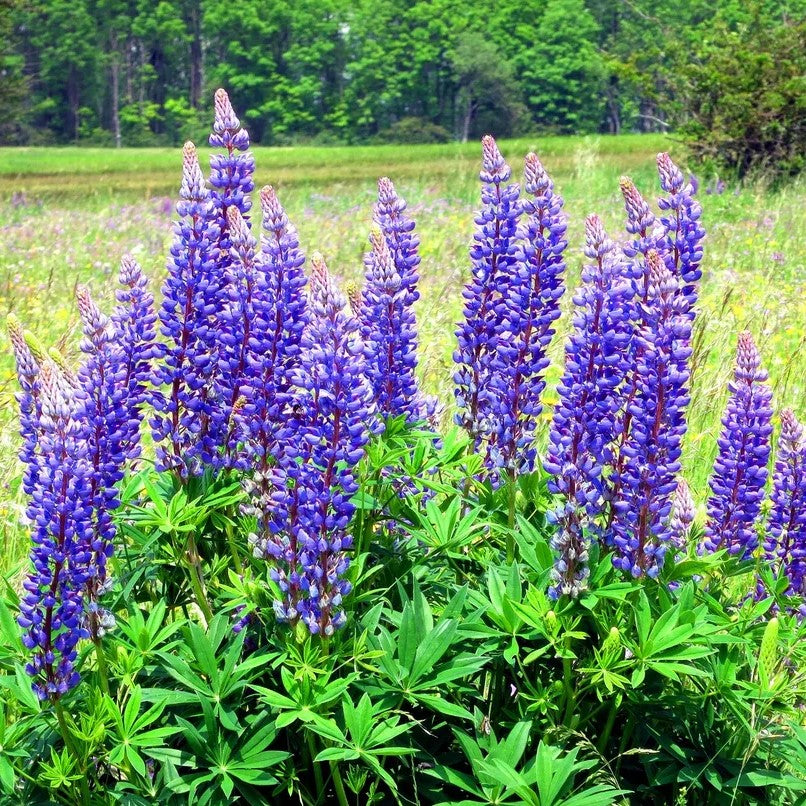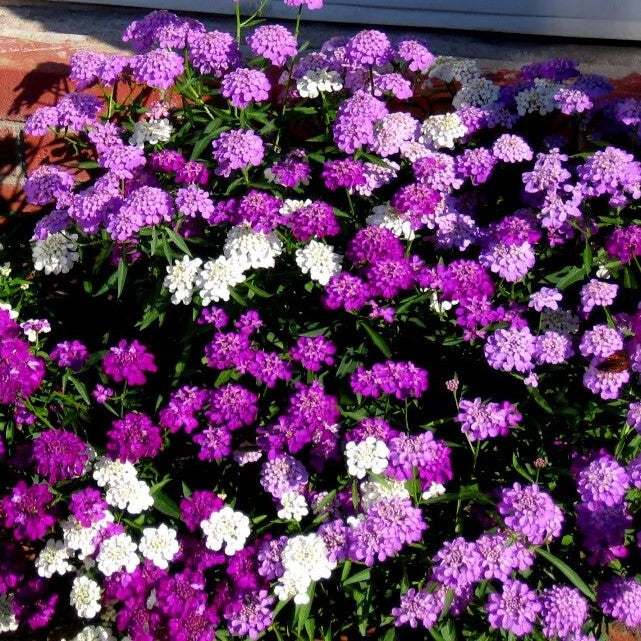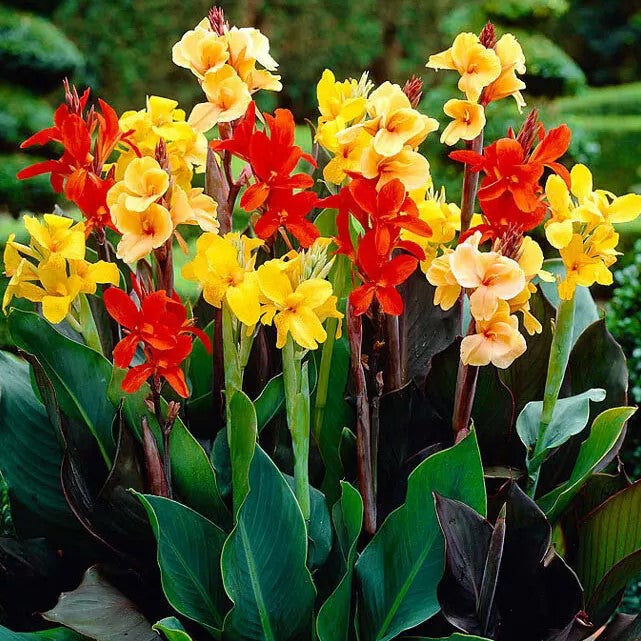Sort by:
33 products
33 products
Black-eyed Susan Mix – Seeds
(Thunbergia alata)
Black-eyed Susan Vine (Thunbergia alata) is a fast-growing climber with masses of cheerful, brightly colored blooms in shades of yellow, orange, and cream, each with a characteristic dark center. Perfect for adding a splash of long-lasting color, this mix thrives on trellises, fences, or hanging baskets, creating a vibrant display all summer long.
Why Grow Black-eyed Susan Mix?
-
Free-flowering climber with vivid blooms
-
Long season of color from summer to frost
-
Easy to grow and fast covering
-
Great for both vertical and container gardening
Key Features
-
Type: Annual climber
-
Height: 150–200 cm
-
Flowers: Summer to autumn
-
Position: Full sun or light shade
-
Soil: Fertile, well-drained
Ideal For
-
Covering fences, trellises, and arches
-
Hanging baskets and balcony displays
-
Fast seasonal screening
-
Bright summer color in any garden
Sowing & Growing
-
Sow indoors: February–April in pots/trays at 18–22°C
-
Germination: 14–21 days
-
Transplant: Harden off and plant outside after last frost
-
Outdoor sowing: Late spring in warm soil, directly where plants will climb
-
Support: Provide trellis, netting, or string for climbing habit
Black-Eyed Susan White Seeds (Thunbergia alata)
Black-Eyed Susan White is a vigorous, climbing annual producing striking white flowers with contrasting dark centers. Its trailing and twining habit makes it perfect for trellises, fences, arbors, and containers. Loved for its long flowering season and fast growth, it adds vertical interest and bright, cheerful color to any garden.
What Makes It Special
-
Bright white flowers with contrasting dark centers
-
Vigorous climbing and trailing growth ideal for vertical displays
-
Long-flowering, providing summer and autumn color
-
Attracts pollinators such as bees and butterflies
Key Features
-
Botanical name: Thunbergia alata
-
Variety: White
-
Seed count: Approx. seeds per pack
-
Height/Spread: Climbs 1.5–2.5 m; spread depends on support
-
Position: Full sun to partial shade; fertile, well-drained soil
-
Flowering period: June–October
Ideal For
-
Trellises, fences, arches, and arbors
-
Hanging baskets and containers with support
-
Vertical interest in garden beds and borders
-
Pollinator-friendly gardens
Sowing Instructions
-
When to sow: February–April indoors; March–May outdoors
-
How to sow:
-
Sow seeds 0.5–1 cm deep in pots or seed trays
-
Germination in 10–14 days at 20–25°C
-
-
Transplanting: Plant outdoors after frost, spacing 25–30 cm apart with support
-
Care: Water regularly; provide trellis or support for climbing; deadhead to prolong flowering
Blackberry Lily – Seeds
(Belamcanda chinensis)
Blackberry Lily is a striking perennial with bright orange, freckled flowers that bloom in summer, followed by shiny black seed pods resembling berries. Its upright clumping habit and sword-shaped foliage make it ideal for borders, cottage gardens, and ornamental plantings. Low-maintenance and hardy, it attracts pollinators and adds vibrant color to any garden.
Why Grow Blackberry Lily?
-
Bright orange, freckled summer flowers
-
Unique black seed pods for decorative interest
-
Attracts bees and butterflies
-
Low-maintenance, hardy perennial
Key Features
-
Type: Perennial
-
Height: 60–90 cm
-
Flowers: Summer
-
Position: Full sun to partial shade
-
Soil: Well-drained, fertile
Ideal For
-
Borders, cottage gardens, and perennial beds
-
Pollinator-friendly gardens
-
Decorative seed pod interest
-
Low-maintenance ornamental planting
Sowing & Growing
-
Sow indoors: February–April in seed trays
-
Sow outdoors: April–May in prepared soil
-
Germination: 14–28 days at 18–20°C
-
Spacing: 30–40 cm apart
-
Care: Moderate watering; remove weeds and deadhead for prolonged flowering
Blue Fescue Grass Seeds (Festuca glauca)
Blue Fescue is a compact, clump-forming ornamental grass prized for its striking silvery-blue foliage and neat rounded habit. It provides year-round interest and a beautiful contrast to flowering plants, rock gardens, or modern landscapes. Easy to grow and low-maintenance, this grass is a top choice for adding texture and color to gardens.
What Makes It Special
-
Stunning steel-blue foliage that keeps its color year-round
-
Compact, tufted shape – perfect for edging or groundcover
-
Extremely hardy and drought-tolerant once established
-
Low-maintenance and versatile in garden design
Key Features
-
Botanical name: Festuca glauca
-
Common name: Blue Fescue
-
Seed count: Approx. seeds per pack
-
Height/Spread: 20–30 cm tall, 25–30 cm spread
-
Position: Full sun; well-drained soil (thrives in poor, dry soils)
-
Flowering period: Summer (produces delicate flower spikes)
-
Lifespan: Hardy perennial
Ideal For
-
Rock gardens and alpine displays
-
Borders and edging along paths
-
Containers and modern minimalist gardens
-
Drought-tolerant or low-maintenance landscapes
-
Adding color contrast to mixed plantings
Sowing Instructions
-
When to sow: February–April indoors or May–June outdoors
-
How to sow:
-
Sow thinly on the surface of moist, well-draining compost
-
Press seeds lightly into the soil, do not cover deeply (light aids germination)
-
Keep at 15–20°C; germination in 14–28 days
-
-
Transplant: When seedlings are large enough, prick out and grow in pots before planting out
-
Planting out: Choose a sunny spot with free-draining soil; avoid overly wet conditions
-
Care: Minimal maintenance required. Cut back old leaves in early spring to encourage fresh growth.
Blue Hair Grass – 300 Seeds (Koeleria glauca)
Add elegant texture and cool-toned color to your garden with Blue Hair Grass (Koeleria glauca). This compact, ornamental grass forms neat clumps of fine, silvery-blue foliage, topped with delicate seed heads in early summer. Its striking appearance makes it ideal for rock gardens, borders, containers, or as a soft contrast among colorful flowers. Hardy and drought-tolerant, it’s a reliable choice for low-maintenance landscapes.
Why Grow Blue Hair Grass?
-
Attractive silvery-blue foliage year-round
-
Airy seed heads add movement and lightness
-
Compact and low-growing, perfect for edging or containers
-
Tolerant of poor, sandy, or dry soils
-
Low-maintenance and hardy perennial
Key Features
-
Type: Perennial ornamental grass
-
Height: 30–40 cm
-
Spread: 25–30 cm
-
Position: Full sun; well-drained soil
-
Uses: Rock gardens, borders, containers, ground cover, naturalistic plantings
Ideal For
-
Adding texture and color contrast to mixed plantings
-
Drought-tolerant, low-care gardens
-
Coastal and gravel gardens
-
Stylish modern landscaping
Sowing & Growing
-
Sow indoors: February–April in trays of moist compost, lightly covering the seed
-
Germination: 14–28 days at 18–22°C
-
Transplant seedlings when large enough to handle
-
Plant out after frost, spacing 25 cm apart
-
Flowers and produces seed heads in early summer
Blue Lupine – Seeds (Lupinus angustifolius)
Blue Lupine (Lupinus angustifolius) is a stunning annual or short-lived perennial producing tall spikes of vivid blue pea-like flowers. Blooming from late spring to early summer, it adds vertical interest and vibrant color to borders, cottage gardens, and mixed flower beds. Hardy and easy to grow, this variety attracts bees and butterflies, making it perfect for pollinator-friendly gardens and long-lasting summer displays.
Why Grow "Blue Lupine"
-
Tall spikes of striking blue flowers
-
Long flowering season from late spring to early summer
-
Hardy, low-maintenance annual or short-lived perennial
-
Pollinator-friendly and adds vertical interest
Key Features
-
Type: Annual/Short-lived perennial (Lupinus angustifolius)
-
Height: 60–90 cm
-
Flowering: Late spring to early summer
-
Position: Full sun
-
Uses: Borders, cottage gardens, mixed flower beds, pollinator gardens
Ideal For
-
Vertical color in borders and mixed beds
-
Cottage-style gardens
-
Pollinator-friendly planting schemes
-
Long-lasting summer floral displays
Sowing & Growing
-
Sow indoors: February–April in trays or pots
-
Sow outdoors: April–May after frost
-
Germination: 14–21 days at 18–22°C
-
Thin seedlings 25–30 cm apart
-
Prefers well-drained soil in full sun
-
Mulch in winter for protection in colder regions
Blue Petunia Star F1 Prio – 50 Seeds (Petunia multiflora)
Description:
Create a stunning display of vibrant blue in your garden with Blue Petunia Star F1 Prio (Petunia multiflora). This vigorous F1 hybrid produces star-shaped, bright blue flowers on compact, well-branched plants. Perfect for hanging baskets, containers, and garden borders, it blooms continuously from spring through autumn, offering long-lasting color with minimal care. Ideal for gardeners seeking high-performance, eye-catching blooms.
Key Features
-
Star-shaped, vibrant blue flowers
-
Compact and well-branched growth habit
-
Continuous flowering from spring to autumn
-
Perfect for baskets, containers, and borders
-
Easy to grow and low maintenance
Ideal For
-
Hanging baskets and window boxes
-
Patio containers and balcony planters
-
Garden borders and bedding displays
-
Long-lasting seasonal color
Sowing & Growing
-
Sow Indoors: February–April
-
Transplant Outdoors: May, after frost
-
Germination: 10–14 days at 20–24°C
-
Plant Spacing: 25–30 cm apart
-
Height: 20–25 cm
-
Light: Full sun
-
Soil: Fertile, well-drained
Care Tips
-
Deadhead regularly to encourage continuous blooming
-
Water evenly; avoid overwatering
-
Fertilize every 2–3 weeks with a balanced liquid fertilizer
-
Pinch young plants to encourage bushy growth
Candytuft ‘Fairy Mix’ Seeds (Iberis umbellata)
Candytuft ‘Fairy Mix’ is a charming annual featuring clusters of small, delicate flowers in shades of white, pink, and purple. Its compact, bushy habit makes it perfect for borders, rock gardens, and containers. Easy to grow and long-flowering, it adds a soft, colorful touch to summer gardens and attracts pollinators.
What Makes It Special
-
Clusters of small, delicate flowers in white, pink, and purple
-
Compact, bushy growth ideal for borders and containers
-
Long-flowering and low-maintenance
-
Attracts bees and butterflies
Key Features
-
Botanical name: Iberis umbellata
-
Variety: ‘Fairy Mix’
-
Seed count: Approx. seeds per pack
-
Height/Spread: 20–30 cm tall, 20–25 cm spread
-
Position: Full sun; well-drained soil
-
Flowering period: May–July
Ideal For
-
Borders, edging, and rock gardens
-
Containers and patio displays
-
Pollinator-friendly gardens
-
Softening paths and garden edges
Sowing Instructions
-
When to sow: February–April indoors; March–May outdoors
-
How to sow:
-
Sow seeds thinly on the surface of moist seed compost and press lightly
-
Germination occurs in 10–14 days at 18–20°C
-
-
Transplanting: Thin or transplant seedlings 15–20 cm apart
-
Care: Water moderately; deadhead spent flowers to prolong blooming
Canna ‘Indian Shot’ Mix – Seeds (Canna indica Mix)
Canna ‘Indian Shot’ Mix (Canna indica) is a striking annual producing lush foliage and vibrant flowers in a mix of red, orange, and yellow shades. These tall, tropical-looking plants add drama and color to borders, beds, and containers, flowering from mid-summer to autumn. Easy to grow in fertile, well-drained soil, Cannas are perfect for creating bold garden displays and attracting pollinators such as hummingbirds and bees.
Why Grow "Indian Shot" Mix
-
Stunning tropical foliage with bright, mixed-color flowers
-
Long flowering period from mid-summer to autumn
-
Tall and dramatic for borders, beds, and containers
-
Attracts pollinators and adds tropical flair
Key Features
-
Type: Annual (Canna indica Mix)
-
Height: 80–120 cm
-
Flowering: Mid-summer to autumn
-
Position: Full sun
-
Uses: Borders, beds, containers, tropical-style gardens
Ideal For
-
Bold summer displays and tropical-themed gardens
-
Container planting and patio decoration
-
Pollinator-friendly gardens
-
Adding height and vibrant color to mixed beds
Sowing & Growing
-
Sow indoors: February–April in trays or pots
-
Germination: 14–21 days at 20–25°C
-
Transplant outdoors after frost danger has passed
-
Space seedlings: 40–50 cm apart
-
Prefers fertile, well-drained soil in full sun
Showing 27/33





